Streamline Your IT Outsourcing Process with the IT Outsourcing Procedure Template Word
Are you tired of the tedious and time-consuming process of outsourcing your IT needs? Look no further than the IT Outsourcing Procedure Template Word from Bizmanualz. This comprehensive template provides a step-by-step guide to streamline your IT outsourcing process and ensure a successful partnership with your chosen vendor.
The IT Outsourcing Procedure Template Word includes all the necessary components for a successful outsourcing process, including vendor selection criteria, contract negotiation guidelines, and project management procedures. With this template, you can easily customize the procedures to fit your specific needs and ensure a smooth transition to your new IT vendor.
Not only does the IT Outsourcing Procedure Template Word save you time and effort, but it also helps to mitigate risks associated with outsourcing. By following the procedures outlined in the template, you can ensure that your vendor is meeting your expectations and delivering quality services. Additionally, the template includes guidelines for monitoring and evaluating your vendor’s performance, allowing you to make informed decisions about the future of your outsourcing partnership.
Don’t let the outsourcing process overwhelm you. With the IT Outsourcing Procedure Template Word, you can confidently navigate the process and achieve a successful partnership with your chosen vendor. Order your copy today and streamline your IT outsourcing process.
IT Outsourcing Procedure
The IT Outsourcing Procedure provides guidance for managing the outsourcing of all of your company’s IT functions. The IT Outsourcing Procedure ensures that outsourcing affords the best overall solution to an IT problem by satisfying customer requirements while controlling costs and conforming to your company’s strategic goals and objectives. It may apply to any IT function or process. (12 page, 1927 words)
In the case of a first-time outsourcer, the outsourced function should present a minimal risk of failure to the company if it does not meet requirements or the outsourcer fails to live up to any of the Service Level Agreements in the contract. Responsibility for maintaining effective internal controls over financial reporting in conjunction with outsourced activities rests with the company’s chief financial officer, regardless of the company’s level of control over those outsourced activities.
IT Outsourcing Responsibilities:
Information Technology Managers are responsible for managing the outsourcing proposal process, administering outsourcing contracts, overseeing outsourced projects and reporting to Top Management on their status, maintaining relationships with outsourcers, and evaluating outsourced services. They should periodically meet with Top Management (at least annually) to review the company’s Information Technology Outsourcing agreements.
Financial Management is responsible for conducting the parts of the Due Diligence Investigation pertaining to financial matters.
Top Management is responsible for final approval of outsourcing contracts. Top Management should consist of the company’s chief executive officer and chief financial officer, at a minimum.
IT Outsourcing Definitions:
Outsourcer – An outsourcing vendor; a business entity providing necessary services to the company, allowing the company to lower operating costs and gain flexibility while gaining special expertise on an as-needed basis.
Outsourcing – Seeking services (resources) outside the company, typically to reduce costs, gain flexibility, and benefit from an outsourcer’s expertise with respect to a given function or process.
Service Level Agreement (SLA) – A binding contract, formally specifying or quantifying a customer’s expectations with regard to solutions and tolerances; a collection of service level requirements, negotiated and mutually agreed upon by the service provider and the consumer.
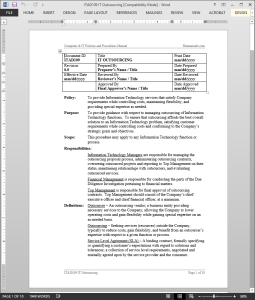 IT Outsourcing Procedure Activities
IT Outsourcing Procedure Activities
- Identifying a Candidate Function For Outsourcing
- Selecting an IT Outsourcer
- Outsourcer Billings
- Arbitration
- Outsourcing Relationship Management
IT Outsourcing Procedure References
- Sarbanes Oxley Act of 2002
IT Outsourcing Procedure Forms




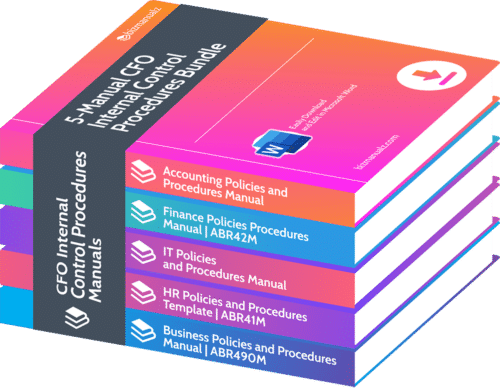


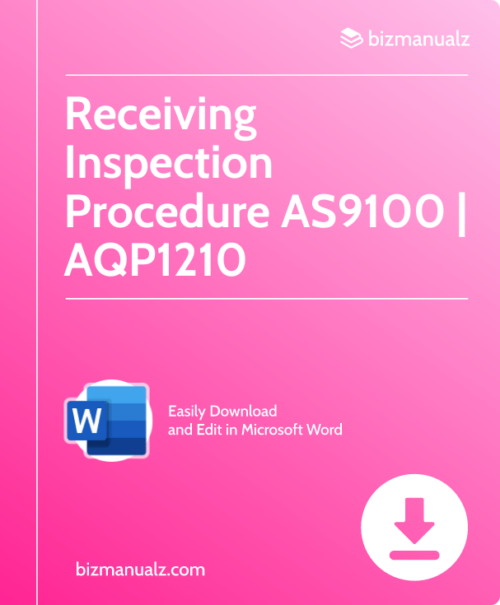
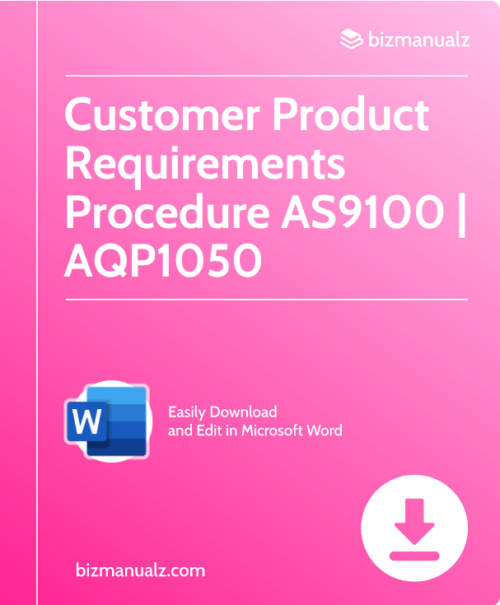












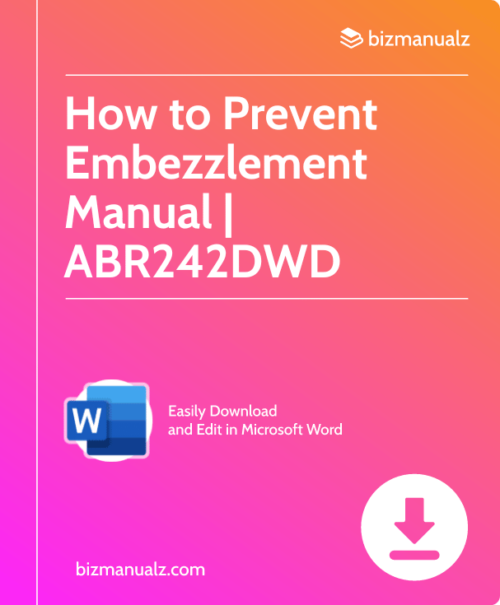
Reviews
There are no reviews yet.